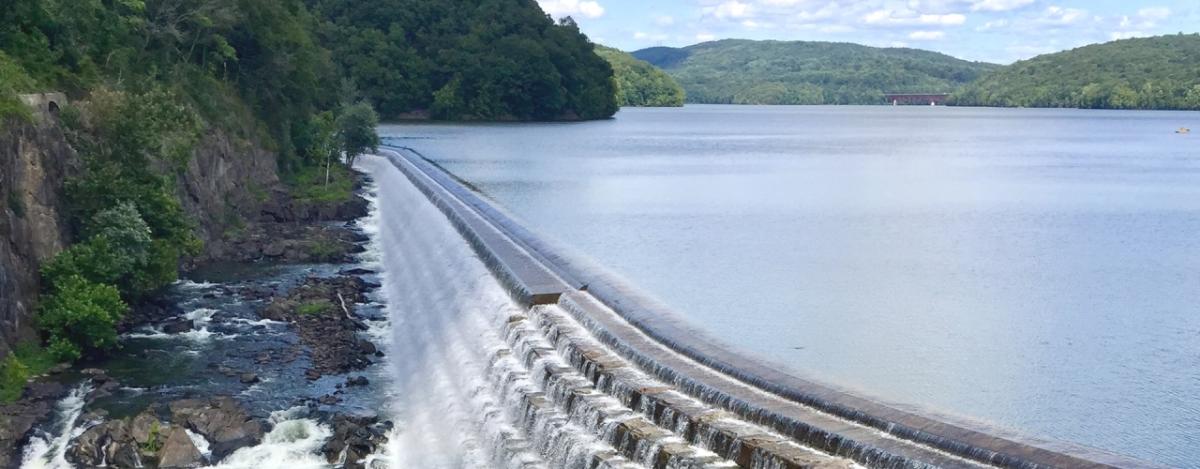Four Water Stewardship Trends to Watch in 2021

Water is a human right, yet one in three people globally do not have access to safe drinking water.
From California to South Africa, the news is filled with stories about megadroughts, bodies of water that are too polluted to swim in or draw from, and cities that are running out of water.
As climate change exacerbates water challenges across the globe, water crises are not going away and will likely continue to grow. And while we are seeing increasing action from some organizations to manage and mitigate water risk, many have not yet explored the impact that water poses to current and future viability.
Four water stewardship trends have us thinking about what is to come in 2021.
1. Water integrated into risk management processes
No organization on the planet can operate without water.
It is estimated that by 2030 global water demand will exceed supply by 56 percent. Yet only 32 percent of respondents to the CDP Water Security questionnaire report that they conduct regular water risk assessments to understand their exposure to reputational, regulatory and physical water risks.
Water is as much a business risk as a sustainability risk. As water crises grow in regions across the globe, water considerations need to be integrated into an organization’s risk management process and considered both within that organization’s operations and across its value chain.
Further, organizations aren’t the only ones evaluating water risk; investors are as well. Water is underpriced across the globe and investors are increasingly exploring the impact that this has on investment portfolios. S&P Global Trucost estimates that if Fortune 500 organizations paid a price for water that aligned with its true value, profit margins would shrink by a tenth.
Investors are demanding more transparency from organizations across a range of issues, including water. In a report titled “Troubled Waters,” BlackRock evaluates why water stress has historically been overlooked by investors and why this is likely to change in the years to come.
Additionally, investors are increasingly recognizing that water is embedded within climate risk and thus needs to be integrated into investor expectations, such as the Climate Disclosures Standards Board’s Task Force on Climate-related Financial Disclosures-aligned water guidance, which seeks to improve the quality of water-related disclosures in mainstream reports. This guidance is currently under review by stakeholders, including WSP, and is expected to be published in the spring of 2021.
With investor pressure increasing and risks growing, we expect to see more organizations integrating water into their risk management processes and leveraging insights gained to set goals and strategies to mitigate this risk.
2. Considering the water-energy nexus
There is a strong link between water and climate. While energy is required to extract, treat, heat and cool water, water is also required to produce energy. The water required for electricity generation is significant, with an estimated 90 percent of global power generation considered water intensive, according to UNESCO’s 2014 “World Water Development Report: Water and Energy.” With global demand for energy estimated to increase by 25 percent by 2040, this challenge will certainly persist.
By leveraging “Guidance for Calculating Water Use Embedded in Purchased Electricity,” a WRI and WSP co-authored paper released in 2020, organizations can now explore the water footprint and potential tradeoffs associated with various types of electricity use. Insights from the WRI/WSP guidance can be leveraged to help organizations across sectors evaluate the potential tradeoffs they may be exposed to when making energy procurement decisions.
Increasing procurement of biofuels, for example, may help an organization reduce emissions and thus achieve GHG reduction targets, but it will also result in an increase in the organization’s water footprint. By directly sourcing renewables like solar and wind, for example, which require no water to generate power, organizations can reduce both energy and water consumption.
Considering the potential tradeoffs, making decisions about complex challenges like water and climate will become more important as these issues evolve in the years to come.
3. Setting water targets that go beyond volumetric water reductions
Water challenges are local in nature — while one region may experience water scarcity, another may be grappling with water pollution or saltwater intrusion.
With increasing recognition of water as a risk to organizations and investors, we expect to see a growing trend of organizations setting more robust water targets that consider the unique challenges faced in different watersheds, with greater ambition in water stressed regions where they operate. While an absolute water reduction target is an important starting point, goals that don’t take into account unique water conditions at the watershed-level may not be as effective in helping an organization to mitigate its risk as targets that take into account the regional context, such as water stress or drought risk.
The United Nations’ Sustainable Development Goal (SDG) 6, which seeks to “Ensure availability and sustainable management of water and sanitation for all,” is an important reference point for organizations to consider as they evolve their goals. Ensuring that everyone globally has access to clean water is an important target within SDG 6 that is garnering greater attention.
In line with the SDGs, we anticipate that organizations will continue to set water access targets as a part of broader water reduction and replenish programs. Microsoft, for example, has committed to replenishing more water than it consumes by 2030 and increasing water access to 1.5 million people by 2030.
4. Increased collaboration to solve shared water challenges
Reducing corporate water use and minimizing pollution are critical business risk mitigation tactics for organizations to consider, yet these efforts alone may not be effective in helping an organization mitigate its exposure to water risk. Relocating to regions not currently experiencing water stress or moving to suppliers who are less exposed to water risk are solutions organizations may consider, but these strategies will be less effective as water crises become more prominent in additional regions across the globe.
It is therefore more important than ever for organizations to not only understand the unique water risks they are exposed to across the value chain, but also to work together with organizations, suppliers, non-governmental organizations, and other stakeholders to pool funds, resources and knowledge required to tackle these challenges collectively. Organizations depend on water to operate and working together to solve water-related challenges is a vital way to protect a resource that we cannot live without.
We’re looking forward to a year in which sustainability leaders advance water risk management, goals and strategies. In 2021, we expect to see organizations playing a critical role in driving more collaborative, context-based solutions to tackle global water challenges.
[To subscribe to Insights, contact the editorial staff at insights@wsp.com.]

